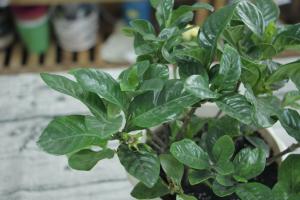How Much Light for Pot Plants Growing Indoors
Growing pot plants indoors can be a fun and rewarding experience. However, to ensure that your plants thrive, it is important to provide them with the right amount of light. Too much or too little light can cause a range of problems, from stunted growth to burnt leaves. So, how much light do your pot plants need to grow indoors? Let's explore the answer to this question.
Understanding Photosynthesis
Before we can discuss how much light your pot plants need, it is important to understand the process of photosynthesis. Photosynthesis is the process by which plants convert light energy into chemical energy, which they use for growth and other metabolic processes. The amount of light that plants receive directly affects the rate of photosynthesis, and ultimately, their growth and health.
The Importance of Light Quantity
When it comes to indoor plant growing, providing your pot plants with sufficient light is crucial. Most pot plants require at least six hours of direct sunlight each day to ensure optimal growth. However, if you are growing plants in a room with limited natural light, you may need to supplement their exposure with artificial light. Generally, the more light you can provide your plants with, the better they will grow.
Factors to Consider
While providing your pot plants with sufficient light is important, there are several factors that you should consider when determining how much light to give them. These factors include:
The type of pot plant you are growing
The intensity of the light source
The distance between the light source and the plants
The duration of the light exposure
Each plant species has different light requirements. For example, plants that are native to tropical regions generally require more light than those from cooler climates. You should also consider the intensity of the light that your plants are receiving. Plants grown under lower intensity light may require longer exposure to make up for the lower energy levels. The distance between the light source and the plants also affects the amount of light that they receive. Plants that are too far from the light source may not get enough light, while those that are too close may receive too much and get burnt.
Choosing Light Sources
When it comes to choosing light sources for your pot plants, you have several options to consider. Some popular indoor growing lights include LED, fluorescents, and high-intensity discharge (HID) lamps.
LED lights are energy efficient, have a long lifespan, and can provide focused light to your plants. Fluorescents are affordable, easy to use, and emit light in a broad spectrum that can promote strong growth. HID lamps are known for their high-intensity output and can be used to promote flowering in plants. You should choose the light source that best suits your pot plants' specific needs.
Conclusion
Providing your pot plants with the right amount of light is crucial for their growth and overall health. The amount of light that you provide will depend on several factors, including the type of plant, the intensity of the light source, and the distance between the light and the plants. When choosing a light source, consider the specific needs of your pot plants and choose the option that will provide them with the optimal conditions for growth.

 how many times do yo...
how many times do yo... how many planted tre...
how many planted tre... how many pine trees ...
how many pine trees ... how many pecan trees...
how many pecan trees... how many plants comp...
how many plants comp... how many plants can ...
how many plants can ... how many plants and ...
how many plants and ... how many pepper plan...
how many pepper plan...
































